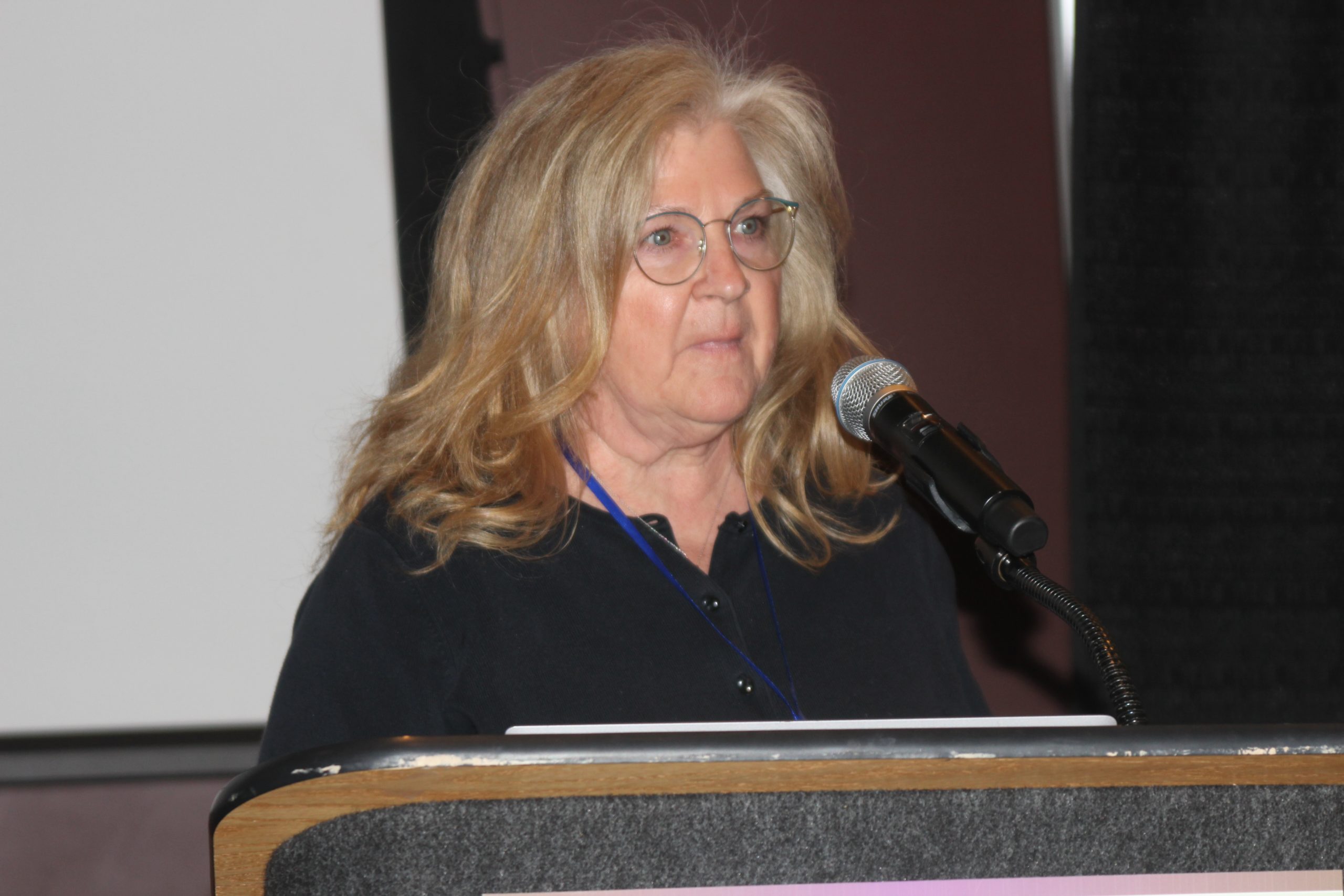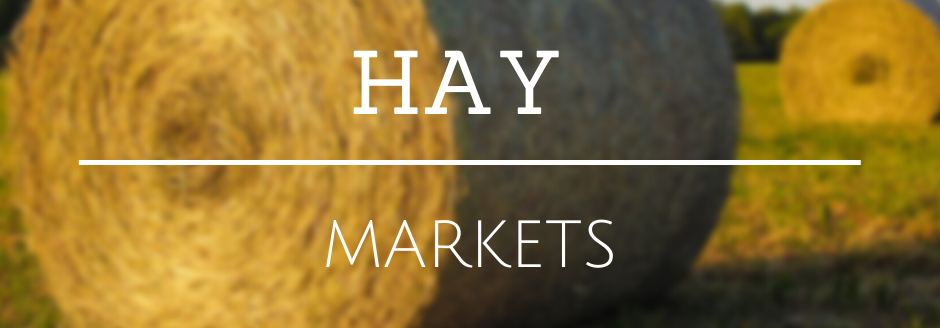Alfalfa and hay receives top billing at U event

Hay production and prices were top of mind for alfalfa and hay producers who attended High Plains Journal’s Alfalfa U at the United Wireless in Dodge City, Kansas.
One of the speakers, Kim Nettleton, (pictured above) hay market reporter for the Kansas Department of Agriculture and luncheon speaker during the Feb. 27 event, quipped that if she knew how 2024 would unfold she would be resting easy in a resort area on an island. What she did was draw on past reports and records and insight from experts and growers to provide some guidance.
Supply and demand depend on Mother Nature and livestock markets. Relief from drought began from May to July 2023 particularly in southwest Kansas, and production improved—with some caveats. While helping to boost alfalfa production, it also aided corn production in the Corn Belt. Record heat days particularly in August, unfortunately, led other growers to bale grain crops rather than harvest them. An overflow of feed stocks lowered alfalfa and hay prices.
“Corn prices also impact hay prices,” she said. “Corn prices dramatically dropped in July through August. After July 1, 2023, alfalfa prices did start to decline. Alfalfa skyrocketed in 2022 and fell dramatically in 2023.”
Those who study the grain markets expect lower corn prices to stay in 2024, and Nettleton expected alfalfa prices to mirror that. Growers are waiting to see if forecasters, who believe that conditions are favorable for plentiful spring moisture before a dry cycle returns, will boost alfalfa and production, she said.
The market depends on livestock, and the nation’s cattle herd stands at 28.2 million head. Today’s numbers are the lowest mark in more than 50 years. Nettleton said an expansion of the herd, which is going to take several years, should improve long-term prospects for future feed needs.
The herd number was already 6% less than the previous year and she said on Jan. 1, 2023, that 93% of the cattle were in areas defined as being in severe drought. One plus may have been that improved pasture conditions in latter 2023 did give cattle producers a place to graze.
With a surplus of hay and grain the good news there will be feed available to help in case an extended drought occurs.
Other speakers touched on production matters. Kelly Seuhs, associate Extension specialist in the department of entomology and plant pathology at Oklahoma State University, discussed “Alfalfa Pest Management: A Look at New Challenges and Strategies for Alfalfa Insect Control.” Jessica Williamson, marketing manager with Massey Ferguson North America, presented “Optimizing Forage Quality During Harvest.” Dan Putnam, professor emeritus from the University of California-Davis, discussed “Technology and its Importance to Alfalfa’s Future in a Changing Climate” and “When You Just Don’t Have Enough: Coping with High Variable Water Supplies.” Romulo Lollato, an associate professor of wheat and forage Extension specialist, from Kansas State University, presented “Management Practices for High-Yielding Alfalfa.
Dwight Scholl, with Tri Rotor Crop Services, Ulysses, Kansas, offered “Basic Alfalfa 101+”. Jeff Hutton, a meteorologist and owner of Hutton Weather Futures Inc., Kingman, Kansas, presented “Plains Weather Review and Seasonal Outlook” as he was the closing keynote.
Alfalfa U also had an industry panel to open the event. Additional coverage from Alfalfa U is planned in future editions.
Dave Bergmeier can be reached at 620-227-1822 or [email protected].



